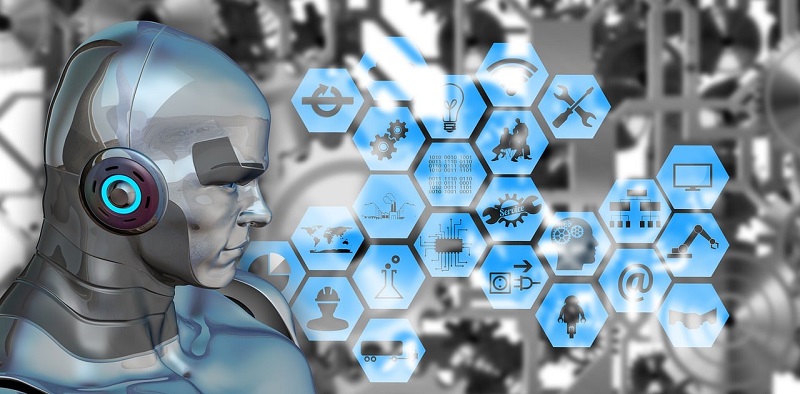In today’s rapidly evolving manufacturing industry, the ability to gain valuable insights from production data has never been more critical. Thanks to advancements in artificial intelligence (AI), manufacturers now have the power to analyze their data like never before. By harnessing the capabilities of AI, production data analysis can uncover patterns, trends, and anomalies that may not be immediately apparent to human operators. Let’s explore the multitude of benefits that AI-driven production data analysis brings to the table.
Identification of inefficiencies and bottlenecks
One of the most significant advantages of AI-driven production data analysis is its ability to identify inefficiencies and bottlenecks in the manufacturing process. By analyzing vast amounts of data, AI algorithms can pinpoint specific areas where improvements can be made. Whether it’s optimizing production sequences or streamlining workflows, AI-driven analysis empowers manufacturers to make informed decisions that enhance overall efficiency.
Proactive measures for improved productivity and reduced waste
Armed with insights from AI analysis, manufacturers can take proactive measures to address identified issues. By implementing targeted improvements based on data-driven recommendations, manufacturers can optimize processes, minimize downtime, and significantly reduce waste. This proactive approach to problem-solving leads to improved productivity, cost savings, and, ultimately, better profitability.
Detection of equipment failures
AI algorithms excel at detecting anomalies and patterns that may indicate impending equipment failures. By continuously monitoring various parameters and analyzing historical data, AI systems can forecast when equipment is likely to malfunction. This enables manufacturers to schedule maintenance and repairs before a breakdown occurs, minimizing downtime and avoiding costly production disruptions.
Scheduled maintenance and repairs
The predictive capabilities of AI-driven analysis extend beyond detecting equipment failures. With the insights provided by AI, manufacturers can plan and schedule maintenance and repairs at optimal times. By anticipating maintenance needs, manufacturers can ensure that their equipment operates at peak performance levels, thereby extending its lifespan and reducing overall maintenance costs.
Accurate demand forecasts and optimized inventory levels
Another significant advantage of AI-driven production data analysis is its ability to provide accurate demand forecasts and optimize inventory levels. By analyzing historical and real-time production, sales, and market data, AI algorithms can generate precise forecasts. This insight helps manufacturers ensure that they have the right amount of raw materials and finished goods at the right time. By avoiding overstock or stockouts, manufacturers reduce inventory carrying costs and improve customer satisfaction by meeting demand promptly. Reduced inventory carrying costs and improved customer satisfaction. With accurate demand forecasts and optimized inventory levels, manufacturers can minimize inventory carrying costs. Overstocking ties up capital and increases storage costs, while stockouts result in lost sales and dissatisfied customers. By leveraging AI-driven analysis, manufacturers can strike the right balance and achieve cost-effective inventory management. Meeting customer demand efficiently not only improves customer satisfaction but also enhances the overall brand reputation within the competitive market.
Identification of quality issues
AI-driven analysis can comb through data from various stages of the production process to identify patterns that may indicate quality issues. Whether it’s inconsistencies in materials, errors in manufacturing processes, or deviations from specifications, AI algorithms can swiftly detect potential problems. Armed with this information, manufacturers can take immediate corrective actions, leading to higher-quality products and reduced customer complaints. By being able to identify potential quality issues with precision, manufacturers can prioritize corrective actions to improve product quality. Whether it involves adjusting manufacturing processes, enhancing quality control, or fine-tuning equipment settings, AI-driven insights guide manufacturers to rectify any shortcomings swiftly. This systematic approach to quality improvement significantly reduces customer complaints, builds customer trust, and fosters long-term loyalty.
In conclusion, AI-driven production data analysis offers a range of undeniable advantages to manufacturers in today’s fast-paced and competitive industry landscape. From identifying inefficiencies and bottlenecks to proactively addressing issues and optimizing productivity, AI-driven analysis revolutionizes the manufacturing process. Predicting equipment failures, optimizing maintenance schedules, and accurately forecasting demand lead to reduced downtime, effective resource management, and maximized profitability. Moreover, AI-driven analysis ensures the production of high-quality products, resulting in heightened customer satisfaction and a stronger market position. Embracing this revolutionary technology is the key to staying ahead in the dynamic world of manufacturing, unlocking opportunities for growth and success.

